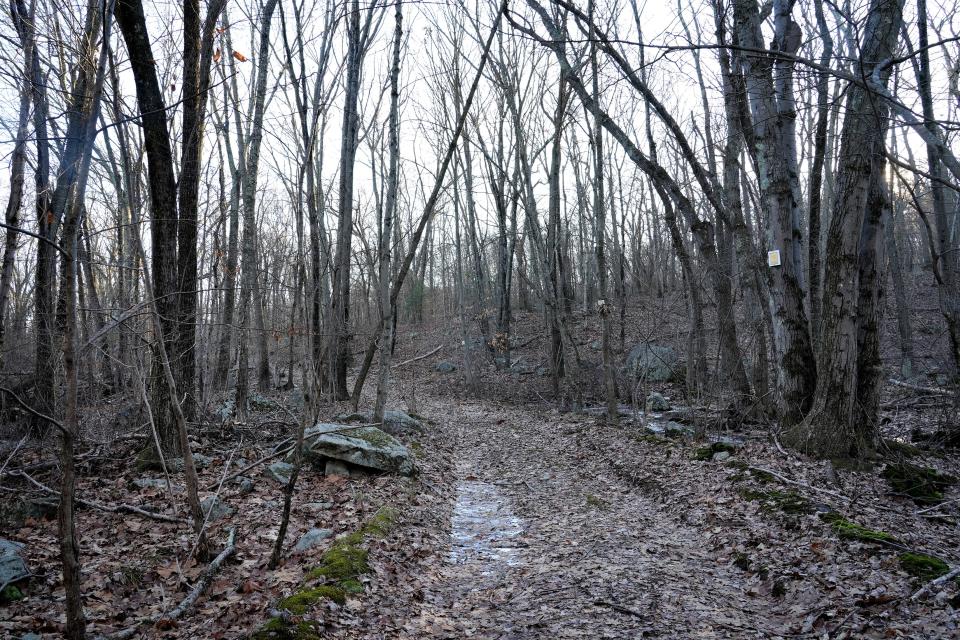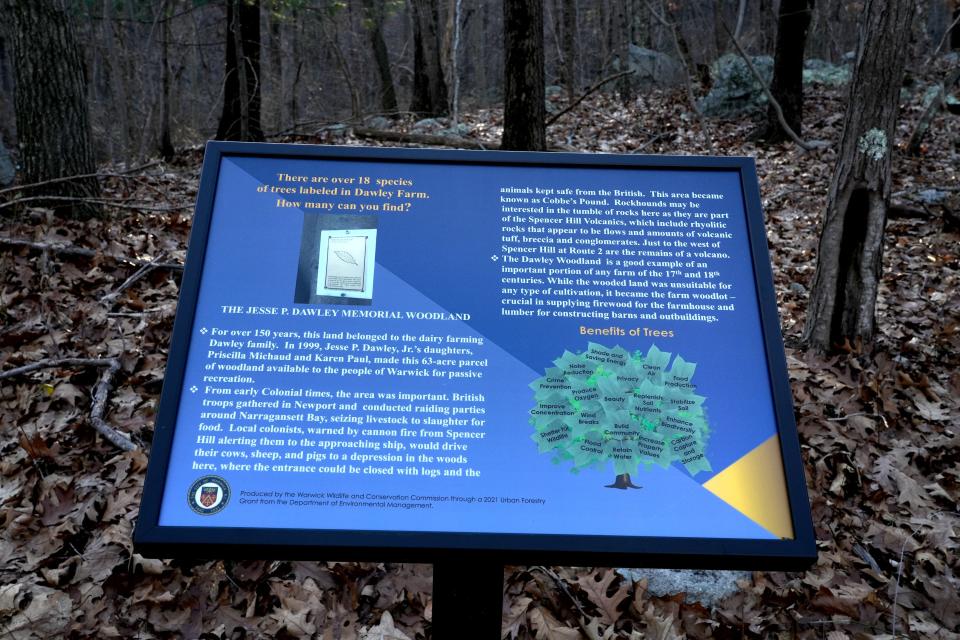Here's how a new law permanently conserved 63 acres of Warwick forest behind Lowe's
Tucked behind the Lowe's on Route 2 in Warwick, there are 63 acres of pine and oak forest crisscrossed by stone walls and a small stream.
Known as the "Dawley Farm," it's a remnant of a time when the Cowesett area was dominated by open fields and woodland rather than car dealerships and big box stores.
And it will be permanently conserved as open space, thanks to a relatively new state law.
Warwick bought Dawley Farm back in 1999 with the intent of protecting it from development. But even though the city owned the land, there was no guarantee that future administrations wouldn't sell it — or decide it would be the perfect place to put a new elementary school, Councilman Vincent Gebhart points out.

That made conservationists nervous. Warwick's 2013 comprehensive plan noted that Dawley Farm was one of several sites in the city that "could be developed if no additional measures are taken." Categorized as "Conservation Intent Lands," such properties are "protected by good will" rather than legally binding contracts like easements, it warns.
RI public trust land law gives towns an easier way to conserve land
Cities and towns typically have a few ways to conserve a piece of property, Gebhart said. One is to rezone the land as open space, but there's always the risk that the zoning designation could be changed again in the future.
"Most of the time you want to do something more durable like a conservation easement," he said. But the process of drafting one takes time, and can be cumbersome.
In 2021, the General Assembly passed a law that offers cities and towns a simpler option: They can dedicate as "public trust land" any properties that were acquired for use as a park or for other conservation purposes.

Public trust lands will be "perpetually protected from conversion to a use other than the use for which it was originally obtained and from development that is inconsistent with the primary recreation, open space and natural resource purposes," the law states.
Gebhart learned about the law from Kate Sayles, executive director of the Rhode Island Land Trust Council, and introduced a resolution to dedicate Dawley Farm as public trust land. It was approved by the Warwick City Council on Dec. 19 and signed into law a few days later by Mayor Frank Picozzi.
Who rules RI's forgotten old roads?: Advocates push to preserve public access
Having the land in the public trust is essentially like having a conservation easement, Gebhart said.
Sayles, in an email to The Providence Journal, said that passing the law was the Rhode Island Land Trust Council's top legislative priority in 2021. Warwick isn't the only community that has used it: Last year, the Narragansett Land Conservancy Trust worked with the Town of Narragansett to place all "conservation intent" properties in the public trust.
"It's so exciting that Warwick was able to utilize the law for Dawley Farm, and we hope that they consider it for their other conservation-intent properties," she wrote.
Former dairy farm said to hold Revolutionary War hideout
Gebhart shared a history of the property that was written in 2021 by Priscilla Dawley Michaud, a Vermont resident who was part of the last generation to grow up on the farm, and described it as a "rare place of quietude and natural beauty."
"During the Colonial era, a pound existed within this property known as 'Cobb’s Pound,'" Michaud wrote. "Whenever British ships were spotted in East Greenwich Bay from our homestead hill, a cannon would be fired to warn the local residents to hide in the pound with their livestock, away from ravaging British sailors."
Michaud fondly recalled how she and her sister used to ride horseback through the woods and "down Cowesett Road and then to Folly’s Landing, where we would take our horses for a swim in the summertime."
"I couldn’t imagine riding a horse down Cowesett Road today!" she wrote.
Spending breakdown:RI communities have used two-thirds of ARPA money. How have they spent it?
The Dawleys once owned an even larger swath of Cowesett.
"In the 1970s, Priscilla's father, Jesse P. Dawley, pastured his milk cows in the fields by Route 2," The Providence Journal reported in 1998. "One day, a helicopter landed there and men in business suits emerged with a proposition to buy Jesse Dawley's dairy farm. That land became the Metropolitan Life Insurance company complex."
Other parcels of land were sold off and became suburban housing developments. In 1998, the family was "prepared to sell the 63-acre parcel to a developer who wanted to build 30 houses there" when Mayor Lincoln Chafee inquired about whether it was available, The Journal reported at the time.
Warwick ultimately paid $430,000 for the land — a price that was controversial at the time, but considerably less than the Dawleys could have gotten from developers.
Today, the forest preserve is a well-kept secret — but fully open to the public.
One entrance can be found on Cowesett Road, roughly across the street the Little Rhody Beagle Club, Gebhart said. It's also possible to access the land from behind the Lowe's plaza and MetLife building on Quaker lane.
This article originally appeared on The Providence Journal: Dawley Farm in Warwick conserved through Rhode Island public trust law
